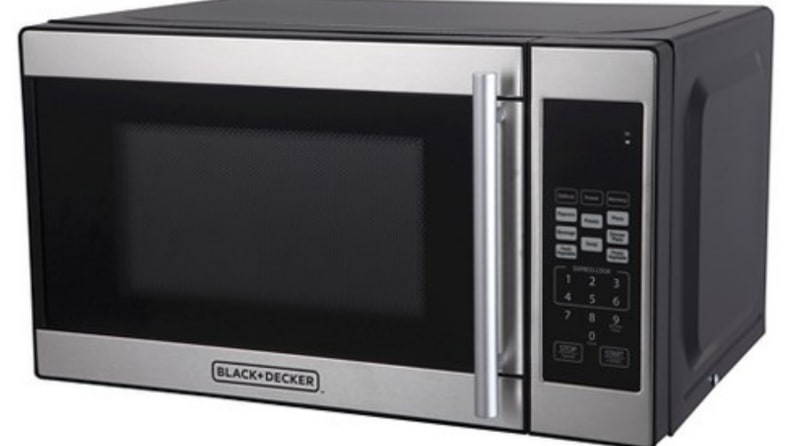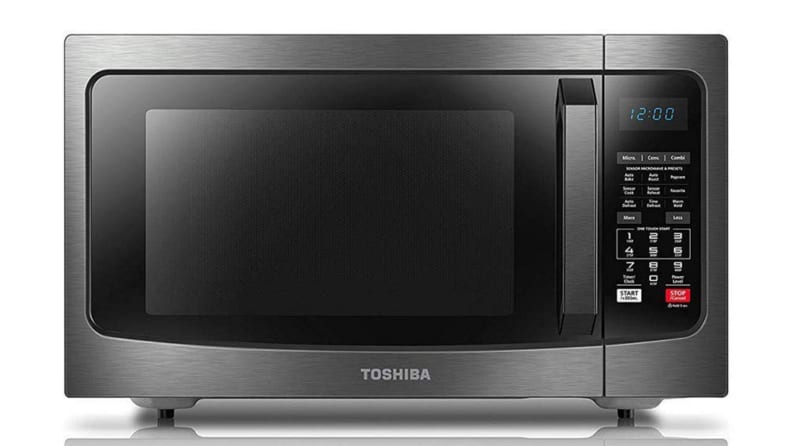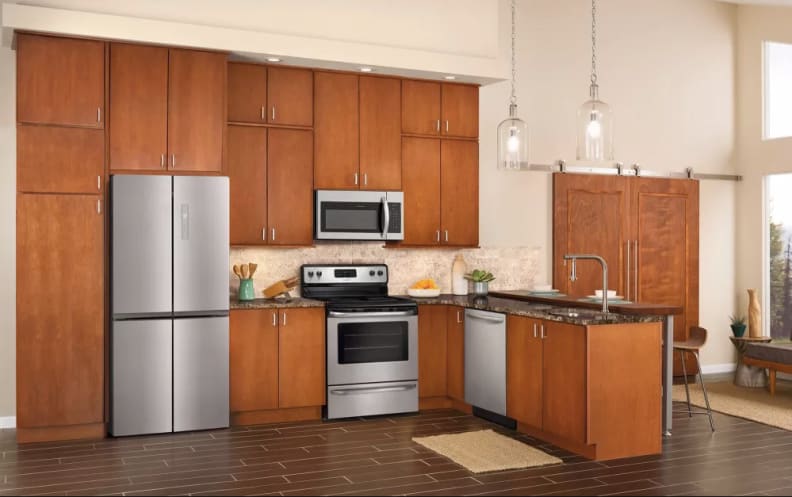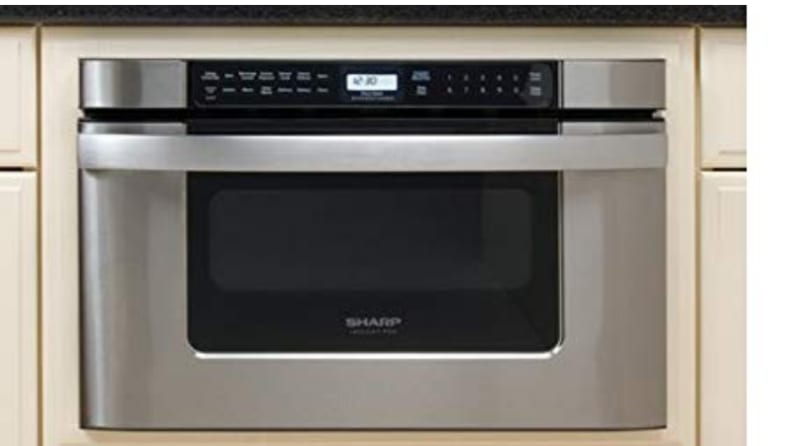Here's why you should never waste your money on an expensive microwave
Most microwaves are the same under the hood
 Credit:
Getty / George Doyle
Credit:
Getty / George Doyle
Recommendations are independently chosen by Reviewed's editors. Purchases made through the links below may earn us and our publishing partners a commission.
You can't beat a microwave oven for convenience, and it’s hard to imagine living without one. Yours will probably last about 10 years. But when it's time to replace it, you needn't spend much money on a new one.
Most inexpensive microwaves are made by only a couple of manufacturers, so it doesn't make much difference which one you buy. They all operate on the same principle: a magnetron generates microwaves, exciting the water molecules in food. The molecules vibrate, making the food warm up. Modern microwaves can do all kinds of other tricks—from browning your food to turning off the power when the food is done. High-end microwaves can be different from cheaper ones—but they have features you may not need.
What do I use my microwave for?
You’re probably not cooking fancy dinners in your microwave unless you’re defrosting or reheating them. If it’s all about the kids popping popcorn and making ramen noodles, you don’t need anything upmarket. Pick a cheap one.
What size microwave do I need?
The right size microwave will differ depending on your space and what you usually cook. Here are some recommendations for every size.
Compact

A compact microwave like this .5 cu.-ft. model from Black + Decker is ideal if you don't have much room on the counter and you use your microwave to make snacks or heat a mug of coffee or ramen noodles.
If you’re mostly making snacks, you can get by with a 0.7 cu.-ft. compact model. For its diminutive size and ease of use, we recommend this compact 700-watt Black+Decker 0.7 cu.-ft. microwave oven, rated 4 out of 5 stars by over 200 owners. Is it the best microwave in the world? No, probably not. But it's more than good enough to get the job done, and at a very reasonable price.
Pros: Cheap Cons: Too small for large plates or trays
Get the Black+Decker 700W microwave oven for $54 at Target
Countertop

The Toshiba EM131A5C-BS is a countertop microwave with 1,000 watts of power. It has some sweet features, including convection and it can mute the beeps for you. If those features are not important to you, you can buy a countertop microwave for much less.
You can set up a countertop microwave wherever you have enough space to accommodate the footprint. We like the 1,000-watt 1.2 cu.-ft.. Toshiba EM131A5C-BS, which received over 450 positive reviews and 4 out of 5 stars on Amazon. The mute feature is a plus for those of us who can't stand the beeping.
Pros: Most popular, cheapest type Cons: Takes up room on the counter
Get the Toshiba countertop microwave for $116 at Amazon
Over-the-Range (OTR)

An OTR microwave saves counter space and vents the range. It may be hard to reach if you're petite.
An OTR microwave warms your food like any other microwave and also vents the cooktop. Some models vent to the outside, and some just recirculate the air. Our recommendation is the Frigidaire FFMV16455TD, which averages 4.7 out of 5 stars on AJ Madison's site. This OTR features a generous 1.6 cu.-ft. of capacity and 1,000 watts of power.
Pros: Frees up counter space Cons: More expensive than a countertop microwave and may be hard to reach for small people
Buy the Frigidaire FFMV16455TD for $243 at AJ Madison
Drawer

A microwave drawer sits flush with cabinetry. It works well installed in the kitchen island.
The most current look for a new build or renovated kitchen, a drawer microwave sits flush with cabinetry. The Sharp KB-6524PS 24-inch microwave drawer oven is expensive, but it doesn't detract from the looks of the kitchen. It rocks a towel bar handle, sensor cook, and an auto-touch control panel.
Pros: Hides the microwave under the counter Cons: Very pricey
Buy the Sharp KB6524PSY for $779 at Amazon
Which microwave features matter?
Modern microwaves offer features your old microwave never dreamed of. But do you actually need them?
Presets
Newer microwaves offer buttons for all kinds of foods, but—surprise—pressing a button only controls the on and off interval of the magnetron. When you set a time, your microwave heats up your food at full power for the time you enter on the keypad. But when you press a button like Defrost, Popcorn, Potato (my personal fave), or any other button, most microwaves simply alternate between 0% and 100% power for a pre-determined period of time that can vary from model to model. Find a microwave that includes the presets you use most often.
Wattage
The higher the wattage, the faster your microwave cooks. Buy a microwave with 1,000 watts of power. Anything less can heat your food unevenly.
Convection
A convection microwave has a fan that moves air around the oven cavity, cooking food faster and baking more like a standard oven. Some can even grill and brown food.
Sensor controls
Sensor controls on your microwave adjust the cook time based on the amount of steam the food gives off. The oven stops when it senses that the cooking is done.
Which brand is best?
Don’t stress too much about the brand name on the outside. Make sure the microwave you buy has the size, wattage, and features you want, then spend what you can afford. When it comes to microwaves, don’t buy into bells and whistles unless you’re sure you’ll use them.



